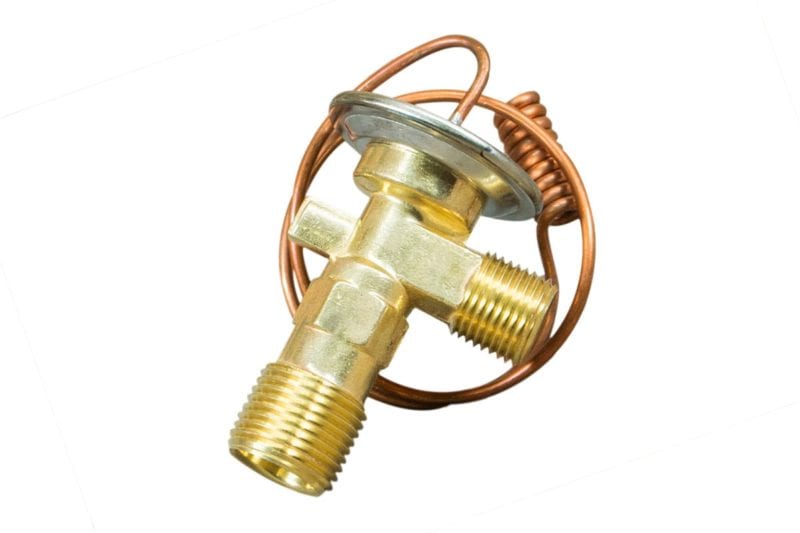An AC unit expansion valve, also known as a thermal expansion valve (TXV or TEV), is a critical component in air conditioning and refrigeration systems. It regulates the amount of refrigerant that enters the evaporator coil, ensuring optimal cooling performance, energy efficiency, and system longevity.

Table of Contents
Toggle✅ Key Function
The expansion valve reduces the pressure and temperature of the liquid refrigerant before it enters the evaporator. This pressure drop is essential for the refrigerant to absorb heat efficiently from indoor air, enabling the cooling process.
🔧 How Does It Work?
High-pressure liquid refrigerant from the condenser enters the expansion valve.
The valve restricts the flow, causing a drop in pressure and temperature.
The cooled, low-pressure refrigerant then enters the evaporator coil.
Inside the evaporator, the refrigerant absorbs heat from indoor air and evaporates.
The expansion valve continuously adjusts flow based on superheat—the temperature difference between evaporated refrigerant and its saturation point—to prevent flooding or starving the evaporator.
🛠️ Types of AC Expansion Valves
| Type | Features & Applications |
|---|---|
| Thermal Expansion Valve (TXV) | Most common in split ACs and commercial systems; modulates refrigerant flow based on temperature |
| Electronic Expansion Valve (EEV) | More precise control using sensors and controller; ideal for variable-speed systems |
| Capillary Tube | Fixed-orifice type, used in smaller systems like window ACs and mini-fridges |
| Automatic Expansion Valve (AXV) | Maintains constant pressure in evaporator; used in stable-load systems |
🧊 Importance in AC Systems
✅ Energy Efficiency: Prevents compressor overload and saves electricity
✅ Prevents Coil Freezing: Ensures only the correct amount of refrigerant enters the coil
✅ Improves Cooling Performance: Maintains proper superheat
✅ Extends System Life: Reduces compressor stress and short-cycling
✅ System Stability: Responds to variable load and ambient temperature
🧪 Signs of a Faulty Expansion Valve
If the expansion valve is malfunctioning, you may notice:
Inconsistent or poor cooling
Evaporator coil freezing
High superheat or low suction pressure
Hissing noise at the valve
Compressor short-cycling
System running continuously with low cooling output
🔄 Replacement or Repair?
A faulty expansion valve should be replaced by a qualified HVAC technician. Choosing the right valve depends on:
Refrigerant type (R-22, R-410A, R-134a, etc.)
System size and tonnage
Coil capacity and pressure rating
Compatibility with existing evaporator/condenser units
🔍 Tips for Selecting an Expansion Valve
Choose TXV for systems requiring modulation and efficiency
Match valve size to evaporator capacity (BTU/hr or tons)
Verify refrigerant compatibility
For inverter or variable systems, consider EEV
Look for reputable brands (Sporlan, Danfoss, Emerson, etc.)
🔧 Common Applications
Residential split air conditioners
Commercial rooftop units
Refrigeration systems (cold rooms, display cabinets)
HVAC chillers
Heat pump systems
